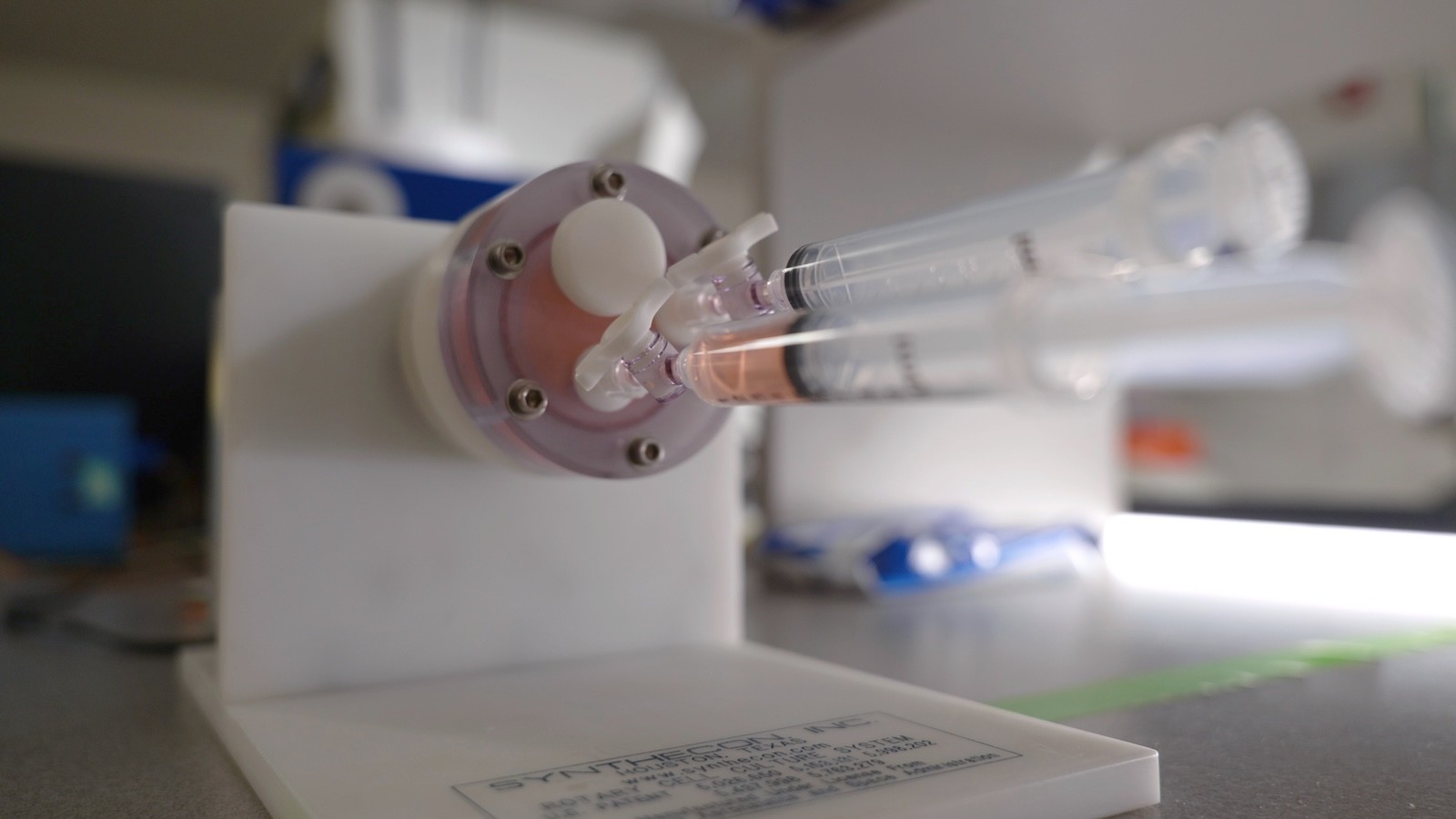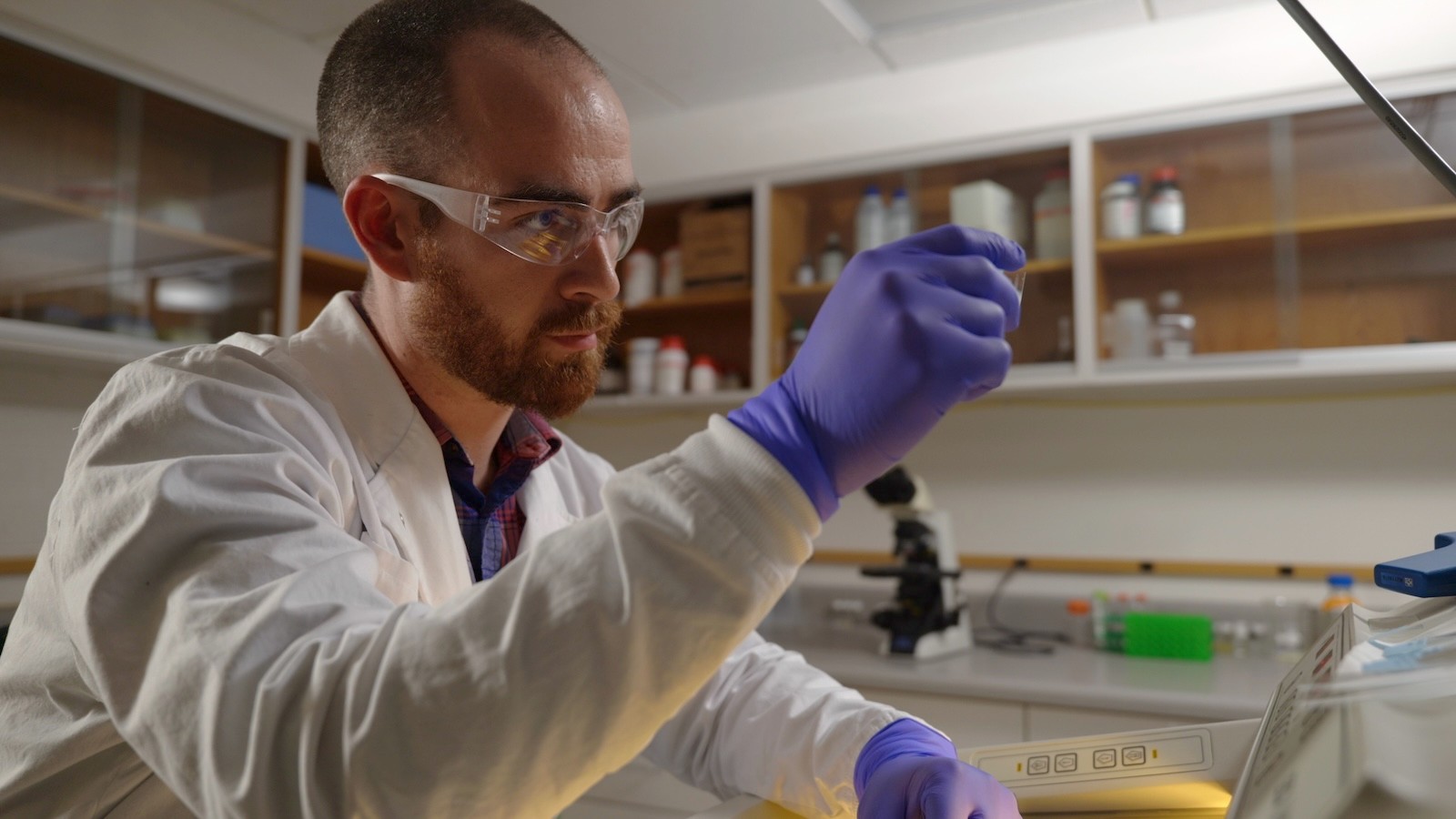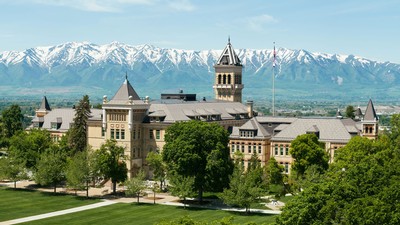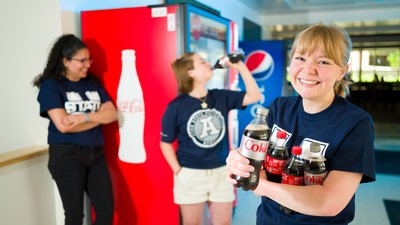USU Researchers Assist with Research to Prepare NASA for Mars Mission
By Sydney Dahle |
Video by Taylor Emerson, Digital Journalist, University Marketing & Communications
In the 1960s, NASA set out to put a man on the moon. In the 2030s, NASA plans to boldly go where no man has gone before: with help from researchers at Utah State University.
Biological Engineering Associate Professor Yu Huang and doctoral candidate Bailey McFarland have dedicated countless hours to researching the effects of space on the human mind to prepare NASA astronauts for this roughly three-year expedition to Mars.
McFarland, a 2021 recipient of the NASA Space Technology Graduate Research program, which Huang serves on as lead researcher and adviser, received funding to study the effects of gamma radiation and microgravity on the human brain while in space. To do this, McFarland and Huang used stem cells to grow brain organoids — a small organ roughly 1 millimeter in diameter that mimics the processes, structures and appearance of the human brain.
Organoids allow scientists to ethically and economically research the effects of radiation and microgravity without sending a person into space. One group of organoids are exposed to micro doses of radiation over a long period of time while the other is cultured in a movement that replicates microgravity in space.
“NASA needs to know how the human brain will respond to radiation when someone is in space for that long,” McFarland said. “This research will show how the brain responds to fight back against radiation with its own natural systems.”
Huang added that this research, in addition to studying the effects of long-term space travel, will help NASA train more students in the field.
“How can humans survive the effects of microgravity and radiation?” he said. “That’s what we’re trying to figure out.”
The team found that when exposed to low doses of gamma radiation over a long period of time, the organoids began to change. The outer structures of the model, which affect developments such as learning and language, were more vulnerable to radiation.
“We know astronauts will be exposed to more radiation that we can shield against,” McFarland said. “Now that we know how it will affect them, we can search for countermeasures to protect against it.”
As for the effects of microgravity, researchers discovered the organoid cells begin to stick together when exposed. More research will need to be done to figure out why this occurs.
“When I was a boy, a mission to Mars seemed like science fiction,” Huang said. “Working with NASA has been a wonderful experience. We are so fortunate to have this opportunity, and I am delighted to not only assist astronauts but to pass knowledge onto the next generation of students that will succeed in helping NASA go beyond.”
One group of organoids are exposed to micro doses of radiation over a long period of time while the other is cultured in a movement that replicates microgravity in space.
A Rotary Cell Culture System, pictured here, mimics the effects of microgravity for the brain organoids.
McFarland, a 2021 recipient of the NASA Space Technology Graduate Research program, which Huang serves on as lead researcher and advisor, received funding to study the effects of gamma radiation and microgravity on the human brain while in space
McFarland and Huang use stem cells to grow brain organoids — a small organ roughly one millimeter in diameter that mimics the processes, structures and appearance of the human brain.
WRITER
Sydney Dahle
Public Relations Specialist
College of Engineering
435-797-7512
sydney.dahle@usu.edu
CONTACT
Yu Huang
Associate Professor
Biological Engineering
435-797-5379
yu.huang@usu.edu
TOPICS
Engineering 346stories Biology 170stories Space 142stories NASA 87storiesComments and questions regarding this article may be directed to the contact person listed on this page.













